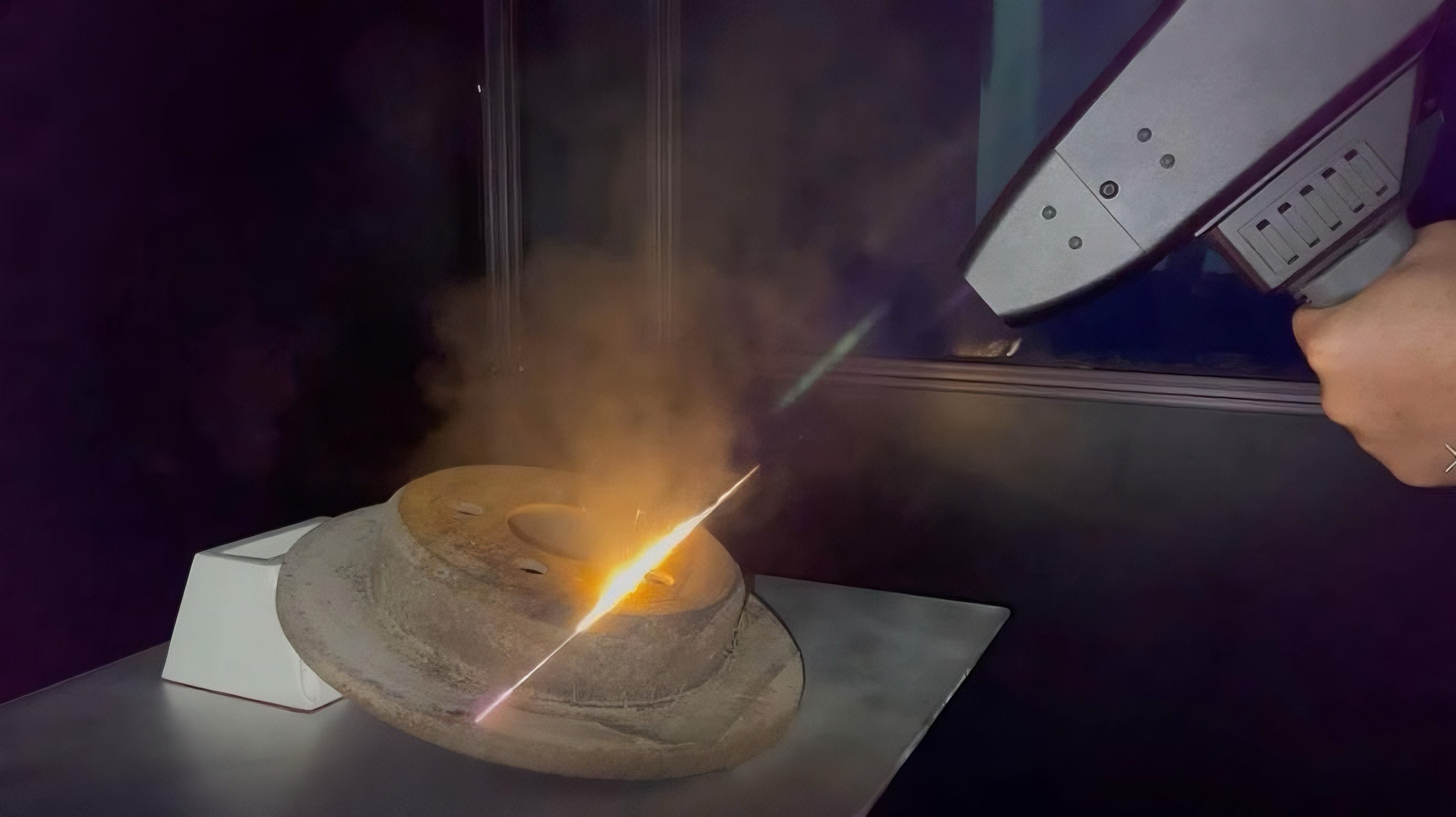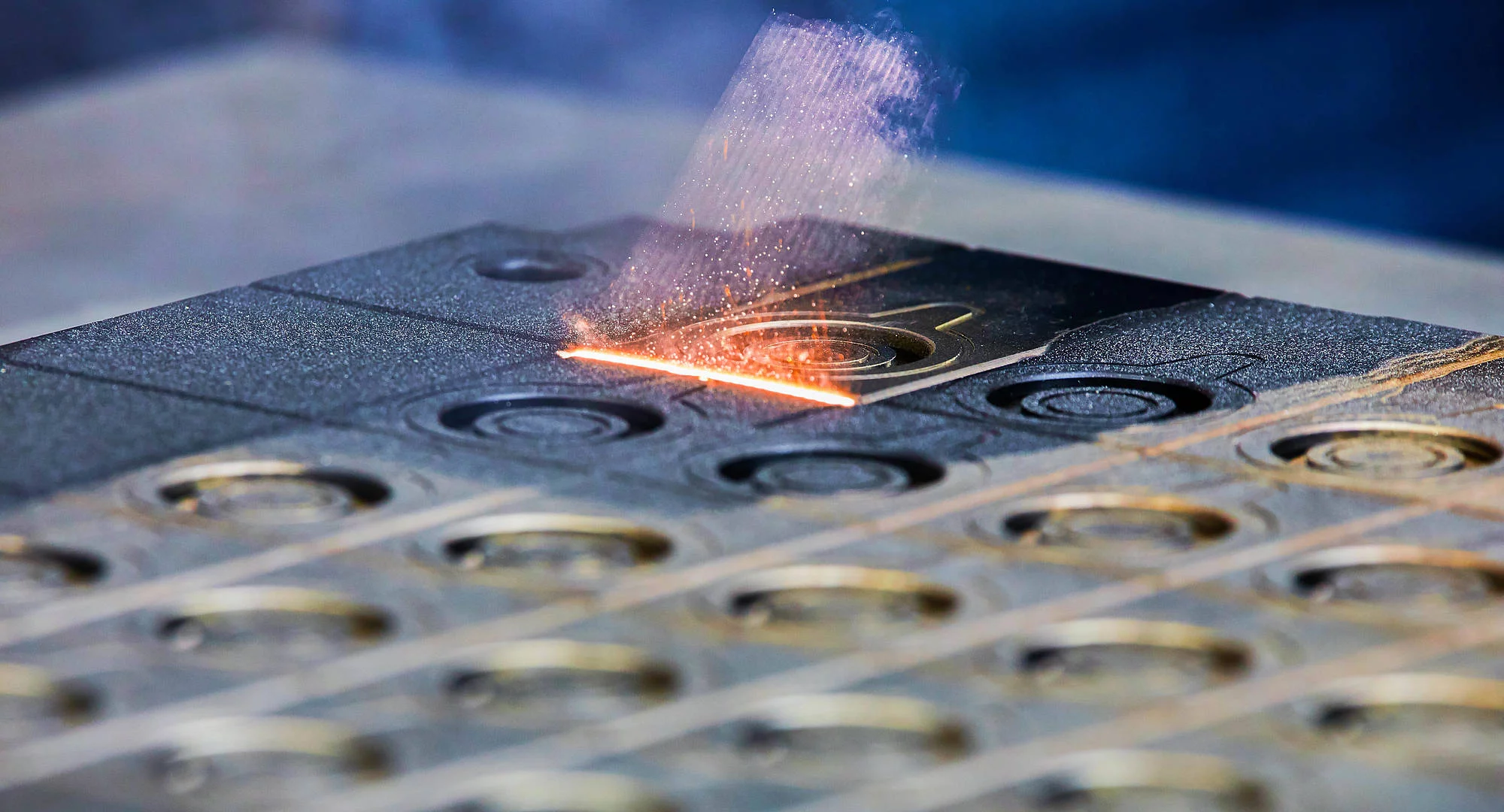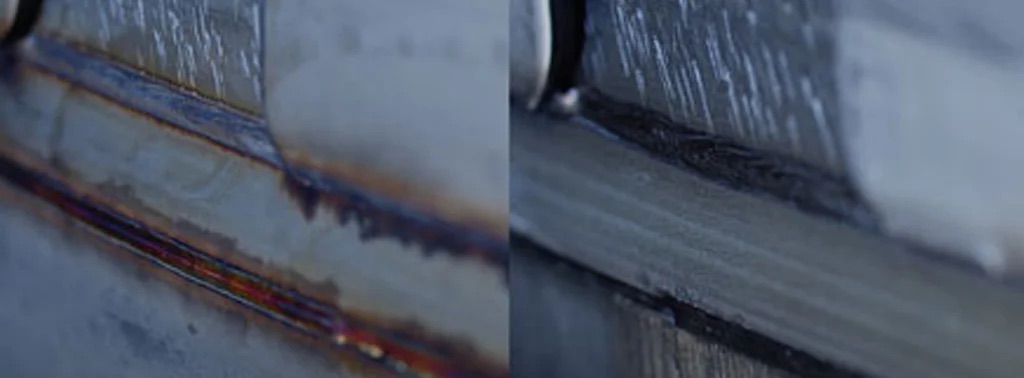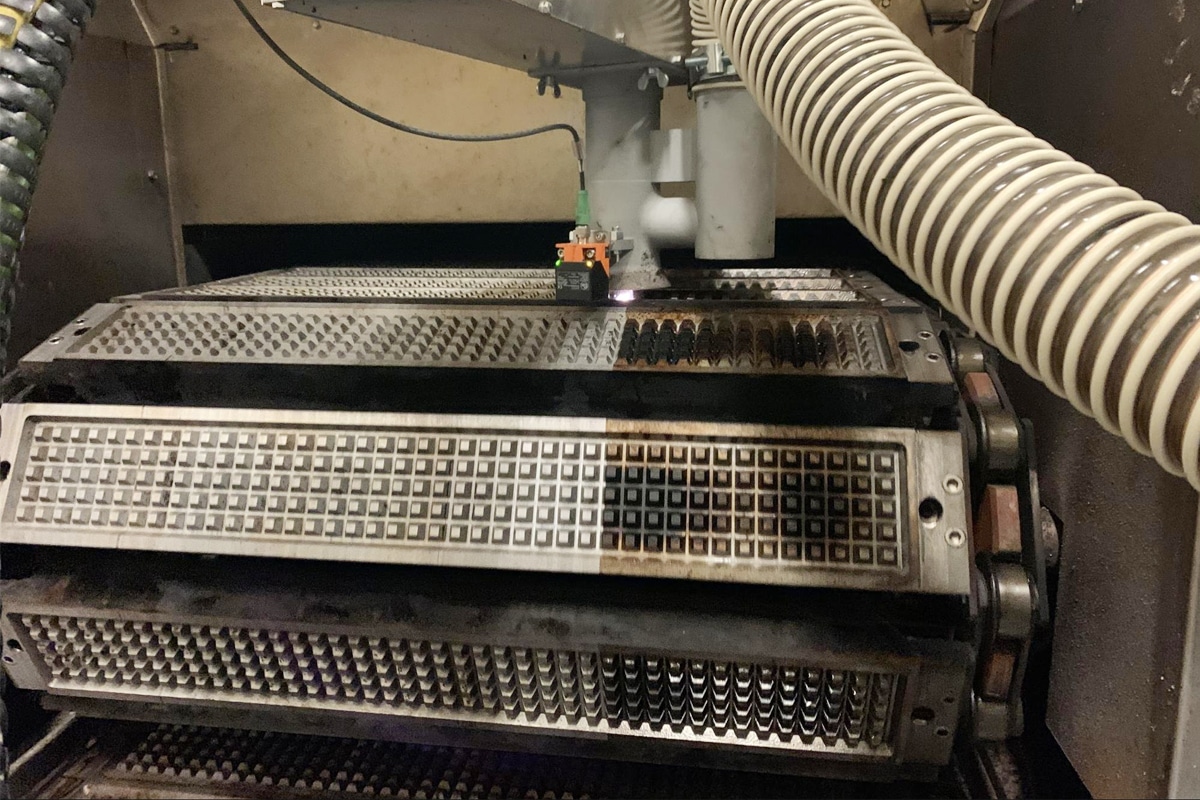I’ve noticed that factories are moving away from harsh chemicals and messy sandblasting for cleaning. From my experience, many businesses now use laser cleaning machine instead. I recommend this method because it gets the job done and also helps our planet. You can see it being used in many areas, from building cars to restoring art. I believe there is a key reason this change is so important right now.
Laser Cleaning Machine for Rust and Paint Removal in Manufacturing
From my experience, laser cleaning machine has completely changed how we handle rust and paint removal. I’ve seen it work in both manufacturing and metalworking. It is precise, efficient, and good for the environment. I recommend it over older methods like sandblasting or using chemicals.
Key Advantages Over Traditional Methods
- No extra materials: I like that you don’t need sand or chemicals like sandblasting does. This saves money over time.
- Protects the surface: The laser only removes the rust or paint. It does not damage the metal underneath.
- Good for the planet: It produces no harmful dust or chemical waste. You don’t need solvents either.
Market Trends and Statistics
The laser rust removal market hit USD 200 million in 2024 and is expected to reach USD 450 million by 2033, with a 9.5% CAGR. The overall laser cleaning market stood at USD 0.7–0.78 billion in 2024 and is projected to exceed USD 1.22 billion by 2033, growing at 5.5%–6.3% annually. Paint removal made up 34% of total revenue in 2024, making it a key driver of market growth.
Real-World Use Cases
In the car industry, laser cleaner offers precise paint and rust removal from frames and tools. Shipyards benefit by cleaning large surfaces without the environmental mess of old methods. In aerospace and factories, it enables safe part restoration without heat damage, ensuring high quality and safety.
Business Impact and Value
Laser cleaning machine reduces operator downtime since no additional surface treatment is needed. It also lowers long-term costs by minimizing maintenance and eliminating the need for consumables or chemical disposal. Businesses gain a real advantage—working faster, delivering higher quality, and offering an eco-friendly service that customers appreciate.
Why Now Is the Right Time to Invest
Based on my experience, now is the perfect time to invest. The market is growing fast. Regulations are getting stricter, and customers want sustainable options. I suggest adopting laser cleaning for these reasons. It offers clear money and work benefits. The market is strong and the demand for effective rust and paint removal is high. I think this is a great chance to invest and improve your tools.
Laser Cleaning Machine for Mold & Tool Maintenance
I’ve seen rust removal laser machine become a popular choice for molds and tools in injection molding and die casting. From my experience, this method is great because it is precise, gentle, and very fast. I’ll show you how it’s changing the game.
Problems with Old Cleaning Methods
Traditional methods like chemicals and sandblasting can damage expensive molds and tools. In contrast, a laser cleaning machine offers a non-contact, precise solution that avoids such damage. These traditional processes also cause downtime, reducing productivity and leading to more frequent mold replacements. Additionally, they generate harmful chemical waste, which negatively impacts both product quality and worker safety.
How Laser Cleaning Helps
- Cleans with precision: The laser only removes the buildup you don’t want. It leaves the mold surface perfect and ready to use.
- Gentle on tools: I like that there is no physical rubbing, which means no tool wear. This approach helps your molds and die-casting tools last much longer.
- Quick return to work: Your team can clean molds right where they are. This really cuts downtime and helps you get more done.
- Good for the environment: You don’t need any solvents, water, or rough materials. This gets rid of extra waste and pollution.
Where I See It Used
Automotive manufacturers use laser cleaning machine to safely remove residue from high-precision molds. In electronics, it keeps fine plastic mold details intact without causing wear. Die casting plants have seen significant savings by reducing yearly mold replacement costs with laser technology.
The Value for Your Business
Lower repair costs come from less wear on molds, so replacements are needed less often. Faster on-site cleaning reduces downtime, boosting productivity. Keeping molds in top condition leads to higher product quality. Plus, without hazardous waste, it’s easier to comply with environmental and safety regulations.
Why I Suggest You Invest Now
Precision molds are more expensive than ever. Safety and environmental rules are also getting tighter. Based on my experience, this makes it a great time to choose laser cleaning for your tools. I believe that businesses making the switch save money and work faster. They also make better, greener products, which gives them a real edge.
Laser Cleaning Machine for Welding Preparation & Post-Weld Cleaning
In my experience, laser cleaning machine is an excellent tool for preparing and cleaning welds. I’ve seen it used in the automotive, shipbuilding, and precision manufacturing industries. This method improves results, speeds up production, and is good for the environment.
Typical Challenges I’ve Seen
Older methods like grinding and chemical cleaning often leave residue and can damage the base material. Manual cleaning is time-consuming and costly. In contrast, a laser cleaning machine offers a cleaner, faster, and safer alternative. Traditional methods cause inconsistent cleaning, which leads to weld defects and weak joints. Plus, the dust and waste they generate harm both workers and the environment.
How Laser Cleaning Is a Better Solution
- Flawless Surface: Laser cleaning machine removes all rust, oxides, and coatings from weld areas. It does this without harming the metal underneath.
- Reliable Quality: It prepares every weld joint the same way. This makes your results very consistent.
- No Added Materials: The process uses pure light. You don’t need any chemicals, water, or abrasives.
- Reduced Downtime: You can clean joints fast and get right to welding, which boosts your total output.
Real-World Use Cases and Industries
Automotive production lines use laser rust remover to prepare steel and aluminum parts for robotic welding, ensuring strong car bodies. Shipyards clean large steel panels with lasers to remove paint, rust, and oil before and after welding, improving safety and efficiency. Laser cleaning also suits precision tools and electronics by removing contaminants from delicate surfaces and tiny joints, preventing defects and failures.
The Impact on Your Business
Improved weld quality means fewer defects and less rework, resulting in longer-lasting products. Quicker turnaround is achieved through automated cleaning, speeding up production. You’ll benefit from lower operating costs by eliminating chemical disposal fees, reducing manual labor, and cutting supply expenses. Plus, safer operations create cleaner workspaces and help meet safety and environmental standards more easily.
Why I Recommend Investing Now
I suggest looking into this technology soon. Rules for weld quality and workplace safety are getting stricter. Laser cleaning machine’s benefits make it a smart investment today. It cuts your costs and supports “green” manufacturing. I believe it helps companies lead the way as the demand for clean, reliable welding grows. The market is expanding, and companies that adopt it first are seeing great returns in quality and reputation.
Heritage Restoration with Laser Cleaning Machines
I believe laser surface cleaning machine technology is a major advance in restoring art and heritage. It gives us incredible precision for sensitive jobs. From my experience, this technique lets experts remove surface pollutants like dirt, rust, old glue, and grime. We can do this from historical artifacts and buildings without damaging the original materials underneath.
Challenges in Traditional Restoration
Manual cleaning and chemicals can damage fragile paintings, sculptures, and buildings. Harsh chemicals may react unpredictably with old materials, causing color fading or detail loss. Scraping or rubbing can wear away stone, metal, or paint, leading to permanent damage of priceless artworks.
How Laser Cleaning Addresses These Issues
- It doesn’t cause damage: The laser focuses just on the top layer you want to remove. It leaves the original surface safe.
- It’s very exact: I find that operators can control the laser’s power and focus with great accuracy. This lowers the risk of mistakes.
- No chemicals needed: I recommend this method because it’s clean. It doesn’t add other harmful substances to the artifacts or the environment.
- Very little contact: The process involves almost no physical touching or rubbing. This protects delicate details and keeps the item’s original character.
Real-World Applications
Restoring old stone buildings: Many specialists use laser cleaning machine to remove years of pollution from historic sites in cities like Rome and Paris, revealing beautiful architectural details once hidden by grime. Saving artworks: Museums employ lasers to gently remove old varnish and soot from paintings and statues, bringing out true colors and textures. Cleaning metal items: Laser cleaning restores old bronze statues and iron gates by removing rust without damaging the surface or shape.
Business Impact and Value
You can save money as restoration teams work faster, reducing labor and material costs compared to traditional methods. Build a green reputation by avoiding harsh chemicals and showing a commitment to environmental responsibility. This safe, gentle cleaning also allows you to handle delicate or valuable pieces, opening the door to more projects and clients.
Why It’s Time to Invest in Laser Cleaning for Restoration
There’s growing demand as cities and museums focus on preserving cultural heritage. At the same time, stricter environmental regulations make green solutions like laser cleaning more appealing. With falling equipment costs, more experts and small businesses can now afford this technology. Early adopters gain a strong reputation, helping them secure high-value projects with strict preservation standards.
Laser Cleaning Machine for Oil, Grease & Coating Removal in Aerospace & Energy
I’ve seen many companies in aerospace and energy turn to the laser descaling machine. It’s a great way to remove oil, grease, and coatings. This process prepares surfaces without harming delicate materials
Typical Challenges Before Laser Cleaning
Older cleaning methods are risky—they rely on harsh chemicals or abrasives that can damage lightweight alloys or composites. Manual cleaning is slow and inconsistent, often leaving residue that affects performance. Chemical solvents pose health risks and create hazardous waste, leading to high disposal costs and strict regulations. Poor cleaning can also cause coating failures, resulting in costly rework.
How Laser Cleaning Solves the Problem
- Precise removal: Lasers target the specific oil, grease, or coating you want gone. The base material is left untouched. I find this useful for protecting sensitive areas near sensors or bonded parts.
- No contact, no abrasion: The laser never touches the surface. This means you get no small scratches or wear on your valuable parts.
- Solvent-free and clean: I think the best part is that this process just uses light. You don’t need chemicals or other cleaning supplies. This cuts down on waste and makes the workplace safer.
- Fast, automated prep: Based on my experience, you can add laser cleaning to robotic arms and automated lines. This speeds everything up and gives you reliable results.
Real-World Use Cases and Industries
In aerospace, engine shops use lasers to clean turbine blades, gearboxes, and airframe joints. Operators report that new coatings adhere better and parts last longer. In the energy sector, lasers remove coatings and oil from wind turbine components, pipelines, and power plant equipment, resulting in shorter downtimes and more reliable performance, according to plant managers.
Business Impact
You’ll have less downtime since parts can be cleaned and recoated quickly without long manual steps or drying time. Using fewer chemicals cuts disposal costs and simplifies compliance with environmental regulations. Some plants have reduced cleaning costs by up to 30%. A perfectly clean surface also improves coating performance, helping equipment last longer and fail less often.
Why Now Is the Right Time to Invest
New rules for solvents and hazardous waste are getting tougher. I believe this is pushing industries to find cleaner options. Laser cleaning fits this need well. It also makes your work safer and more efficient. The technology is easier to get now. I suggest being one of the first to use it to build a reputation for innovation. In my opinion, investing in laser cleaning today prepares your business for the future. It helps you cut costs and stay ahead of new industry rules.
Summary
Based on my experience, I view laser cleaning as much more than a new tool. I believe it is the future of how we work with materials. I have seen across many industries that companies adopting this technology now are ensuring their success for years to come. The benefits are straightforward: you get better results, you spend less, and you help the planet. In my opinion, this is one investment you will be happy you made. Ready to learn more? Contact us now for expert advice on laser cleaning machine.





